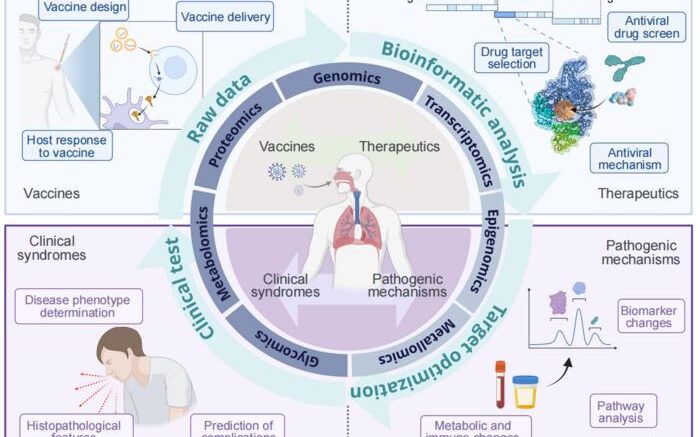In a new study, researchers present an up-to-date overview of the latest applications of multi-omics technologies in strategies addressing COVID-19. The results of this study, published in National Science Review, was led by Dr. Chunying Chen (National Center for Nanoscience and Technology), Dr. Yechun Xu (Shanghai Institute of Materia Medica, Chinese Academy of Sciences), Dr. Chengqi Yi (Peking University) and Dr. Guanbo Wang (Peking University).
Firstly, the emerging multi-omics technologies, including genomics, transcriptomics, proteomics, metabolomics, epigenomics and metallomics, have helped understand the structural and molecular features of the virus. Then, multi-omics technologies have played a key role in assisting the screening of antiviral drugs, the characterization of drug antiviral activities, and the study of the mechanism of action of antiviral drugs. In addition, many multi-omics approaches, including glycomics, transcriptomics, proteomics, etc. provide potential value in finding the characteristics of pathogens and elucidating host responses to vaccines, which can ultimately lead to a roadmap for vaccine design.
This review provides suggestions toward the development of highly effective therapeutics (antibodies and small molecular drugs) and vaccines, which is particularly remarkable in chemistry, material and immunology science.
Source: Science China Press
